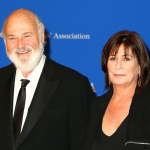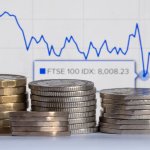This month’s trade tracker takes a deep dive into EU trade deals. It looks at what deals the EU has recently signed and is currently negotiating, as well as the economic impact they may have and divergence from the UK since it left the single market.
This is the second instalment, with last month’s tracker focused on the UK and its current trade negotiations.
Signed but not in force
The EU has signed two economic partnership agreements (EPAs), one with West Africa and the other with the East African Community (EAC). They have yet to come into force. Upon ratification, the deals will reflect one of the first major trade divergences between the EU and the UK from the EU side.
West Africa
The West Africa EPA involves 16 West African states that did not previously have trade deals with the EU. For the EPA to be fully ratified, all 16 states must sign the deal and then adopt it in their respective legislatures.
Until the adoption of the full West African regional EPA, ‘stepping stone’ Economic Partnership Agreements with Ivory Coast and Ghana entered into provisional application on 3 September 2016 and 15 December 2016 respectively.
Full adoption from the remaining 14 countries is still awaited. In total, 13 of the 14 remaining West African states have signed and are awaiting the final signature before ratifying the deal; with only Nigeria yet to sign. Nigeria is hesitant to sign the EPA out of fear that it could jeopardise the country’s industralisation and the jobs that would come from it.
Post-Brexit, the UK successfully rolled over the stepping stone EPAs with Ivory Coast and Ghana, part of the 69 trade deals that were rolled over when it left the EU. However, when the remaining 14 countries adopt the deal, there will be a direct divergence between UK/EU trade relations.
The EPA takes into account regional differences with the aim that it will not disadvantage local trade within countries. The EU will be open from day one to West African states while trade from the EU will slowly be implemented over a 20-year period, removing import tariffs at a slower pace to ensure that local markets in West African countries are not adversely affected.
More flexible rules of origin will allow products being exported from West African countries to have inputs from other countries and still be eligible for tariff-free trade with the EU, giving goods from West Africa more ability to utilise global supply chains.
The EU also committed to improving trade infrastructure before the deal is fully ratified. From 2014 to 2022 €6.5 billion was invested by the European Investment Bank into trade, agriculture, infrastructure, energy, and capacity building for civil society involvement.
The deal builds on established trading relationships for both parties as the EU is the West Africa bloc’s largest trading partner and West Africa the EU’s largest trading partner in sub-Saharan Africa. In value, EU-West Africa trade amounts to more than €47 billion.
In terms of sectors, West Africa’s exports to the EU consist mainly of oil and gas (58.7%) and food products (28.9%). West Africa’s imports from the EU consist of fuels (27%), food products (20.6%), machinery (23.2%), and chemicals and pharmaceutical products (10%).
The deal will look to improve market access to the EU for West African exporters. This will be particularly important for some of the main exports such as bananas, other fruits and vegetables, fishery products, processed cocoa, and textiles and leather products. The deal also aims to put in place safeguards to prevent products from the EU from increasing too quickly and impacting local markets.
East African Community (EAC)
The EAC EPA involves six countries, Burundi, Kenya, Rwanda, Tanzania, South Sudan, and Uganda. Kenya and Rwanda are the only countries to have signed the EPA so far, both signing it in 2016 and Kenya ratifying it in the same year. Kenya is the only country to have ratified it to date. Similar to the West Africa EPA, the EU has signed a stepping stone EPA with Kenya while they await full ratification from all six countries. The UK rolled over that deal with Kenya when it left the EU. This deal is not as far along as that of West Africa. While the deal is finalised, the process of ratification by each country’s legislative body is still in the works, therefore, its benefits will not be realised for some time.
Similar to the West Africa agreement, once ratified the EAC would have immediate access to the EU market with a partial and gradual opening of the EAC market. It includes a focus on sustainable agricultural development, including food security, rural development, and poverty reduction in the EAC. It guarantees that the EU will not apply exports subsidies, even in times of market crisis.
The deal will help EAC exports of coffee, cut flowers, tea, tobacco, fish, and vegetables while it will help EU exports to West Africa, which are primarily dominated by machinery, vehicles, and pharmaceuticals.
In negotiation
The EU is currently in ongoing negotiations with Australia, Indonesia, and, more recently, India to sign free trade agreements. While negotiations were underway with China and the Philippines, they have since been indefinitely paused.
China
An investment agreement with China would significantly boost the already substantial trade between the EU and China, which averages over €1.5 billion daily. An investment agreement’s purview is narrower than a free trade agreement. The agreement will only look at liberalising rules around investments between the EU and China instead of every sector of trade. This deal seeks to address the imbalance of openness to foreign investment, as currently, the EU does not enjoy the same level of access to China as China does in the EU.
Negotiations were concluded in December 2020 on a Comprehensive Agreement on Investment (CAI). It included significant provisions on sustainable development, including commitments to effectively implement the Paris Agreement on climate change and specific commitments on ratifying International Labour Organisation (ILO) fundamental Conventions on the abolition of forced labour.
It also provides much more stable access for European businesses to invest in China in covered sectors and prohibits discriminating against them in favour of Chinese companies. The majority of the agreement focuses on commitments China would give to the EU. While China would benefit from more open access to markets, Europe has more to benefit due to the China market being more closed off than the EU’s at present.
With negotiations now concluded, the deal is in legal review and awaiting approval for ratification.
However, opposition to the deal has put its future in doubt. The US strongly criticised the EU for not consulting them on the deal and noted that the deal goes against US policies on handling China.
The deal faced its biggest setback in 2021 when the EU imposed sanctions on four Chinese officials for their connection to the human rights violations against the Uighur people in Xinjiang. This led to reciprocal sanctions against EU officials. In turn, this led to the European Parliament blocking ratification of the deal over the sanctions dispute, putting it in jeopardy.
German Chancellor, Olaf Scholz, has said he hopes that the CAI can take effect as soon as possible. However, it looks unlikely to be in 2023, as tensions between China and EU allies, like the US, grow worse.
Philippines
Talks on a trade and investment agreement with the Philippines have stalled with the last negotiation happening in 2017. The EU Parliament adopted a resolution condemning the extrajudicial killings that began in 2016 as part of President Duterte’s anti-drug campaign. No progress has been made on the trade deal since.
From the EU side, the negotiations focused on tariffs and non-tariff barriers as well as ensuring high standards of human rights, labour, and environment.
Indonesia
The EU is currently negotiating a free trade agreement with Indonesia. This deal aims to cover similar areas as agreements with Singapore in 2014 and Vietnam in 2015. Collectively, these deals are seen as building blocks for a region-to-region agreement with the Association of Southeast Asian Nations (ASEAN), which consists of Brunei, Cambodia, Indonesia, Laos, Malaysia, Myanmar, Philippines, Singapore, Thailand, and Vietnam. ASEAN is the EU’s third largest trading partner, behind only the US and China.
Talks with Thailand, Malaysia, the Philippines, and Myanmar are on hold. In the case of Indonesia, negotiations have stalled over the EU’s ban on palm oil and from the EU side, Indonesia’s ban on nickel exports. Therefore, while talks are reasonably advanced with Indonesia, a trade deal with the ASEAN will still take some time to finalise.
Currently, the EU remains largely absent from the region. It has not joined the Comprehensive and Progressive Agreement for Trans-Pacific Partnership (CPTPP) or Regional Comprehensive Economic Partnership. These partnerships create trade agreements with multiple countries across the world to build stronger trade ties. The EU’s absence has been contrasted with the growing activity of China in the region.
In comparison, the UK is currently renegotiating its trade deal with Vietnam and Singapore. Agreements with Brunei, Cambodia, Indonesia, Laos, Malaysia, Myanmar, Philippines, and Thailand are not in the works, therefore any talk of an agreement between the UK and ASEAN is in the distant future. However, the recent accession to the CPTPP puts the UK closer to the Indo-Pacific region.
India
Talks initially began in 2007 and stalled in 2013 before recommencing in 2022, following a nine-year hiatus due to a lack of progress. The main negotiations are around a free trade agreement, though there are separate negotiations for an investment protection agreement and an agreement on geographical indications as well.
The EU wants to remove tariff barriers and open trade with India, particularly for SMEs, and in return, the EU would open up services and public procurement markets to India. Since talks only reopened in 2022, the negotiations are at an early stage, though progress has been made in several significant areas.
Should an agreement come, it will build on an already extensive trading relationship. The EU is India’s third-largest trading partner, accounting for 10.8% of India’s trade. It has seen a 30% increase in trade with the EU over the last decade. India stands as the EU’s tenth-largest trading partner, accounting for 2.1% of total trade in goods.
It is reasonable to assume that the UK is eager to have a deal signed with India before the EU ratifies a deal. As outlined in our previous trade tracker on UK trade deals, a deal with India would be significant for the UK, providing much-needed new relations with non-EU countries.
India only has free trade agreements (FTAs) with its close Southeast Asia and Oceania neighbours. A UK-India FTA would put the UK ahead of any of its North American or European counterparts. For the EU, this deal would provide a similar benefit to the UK, opening trade up with one of the largest economies in the world. However, expectations should be tempered as India is historically wary of free trade deals and has often walked away from the table.
Australia
The Australia-EU deal looks to achieve the same status for European exporters as transpacific partnership exporters. Currently, the EU is a less favourable option for Australian exports as trade with ASEAN and CPTPP partners is tariff-free. Consequently, the deal focuses on removing custom duties for SMEs, providing better access to Australian government contracts for EU exporters, and providing simpler product testing procedures and product protections for distinctive products.
The EU states that this deal will largely benefit SMEs in the motor equipment, machinery, chemicals, and pharmaceuticals industries. However, the deal will build on the already substantial trading relationship, with expectations that trade in goods will increase by 37% while trade in services will increase by 8%.
The EU has been clear that an FTA with Australia will not fully liberalise trade in sensitive agricultural products, reflecting a major divergence from the Australia-UK deal.
Conclusion
One of the most striking differences between the UK and the EU’s approach to negotiating trade deals is the extensiveness with which the EU negotiates these trade agreements. The EU has not put deadlines on signing any deals allowing for them to assure mutual benefit to the two parties.
The UK’s approach on the other hand seems more akin to a ticking clock scenario in which the UK, having so recently left the EU, is trying to sign deals as quickly as possible and demonstrate post-Brexit benefits to the public.
These contrasting approaches are most evident in the negotiation with Australia. The UK was willing to make far more concessions with Australia than originally anticipated. The India deal was postponed out of fear the UK was headed towards the same outcome.
Another key difference has been the promises made around the deals. For the UK, it is important that trade grows post-Brexit, or at least remains stable. These trade deals are crucial in this regard. However, projections from both the government and think tanks point to a picture of slow and relatively small results from the trade deals.
It is too early to see any economic divergence between the UK and EU caused by trade deals, but the most likely result will not be one of shocking contrast but slow departure.
By Stephen Hunsaker and Tom Howe, researchers, UK in a Changing Europe.
The post Trade tracker: EU trade deals appeared first on UK in a changing Europe.











